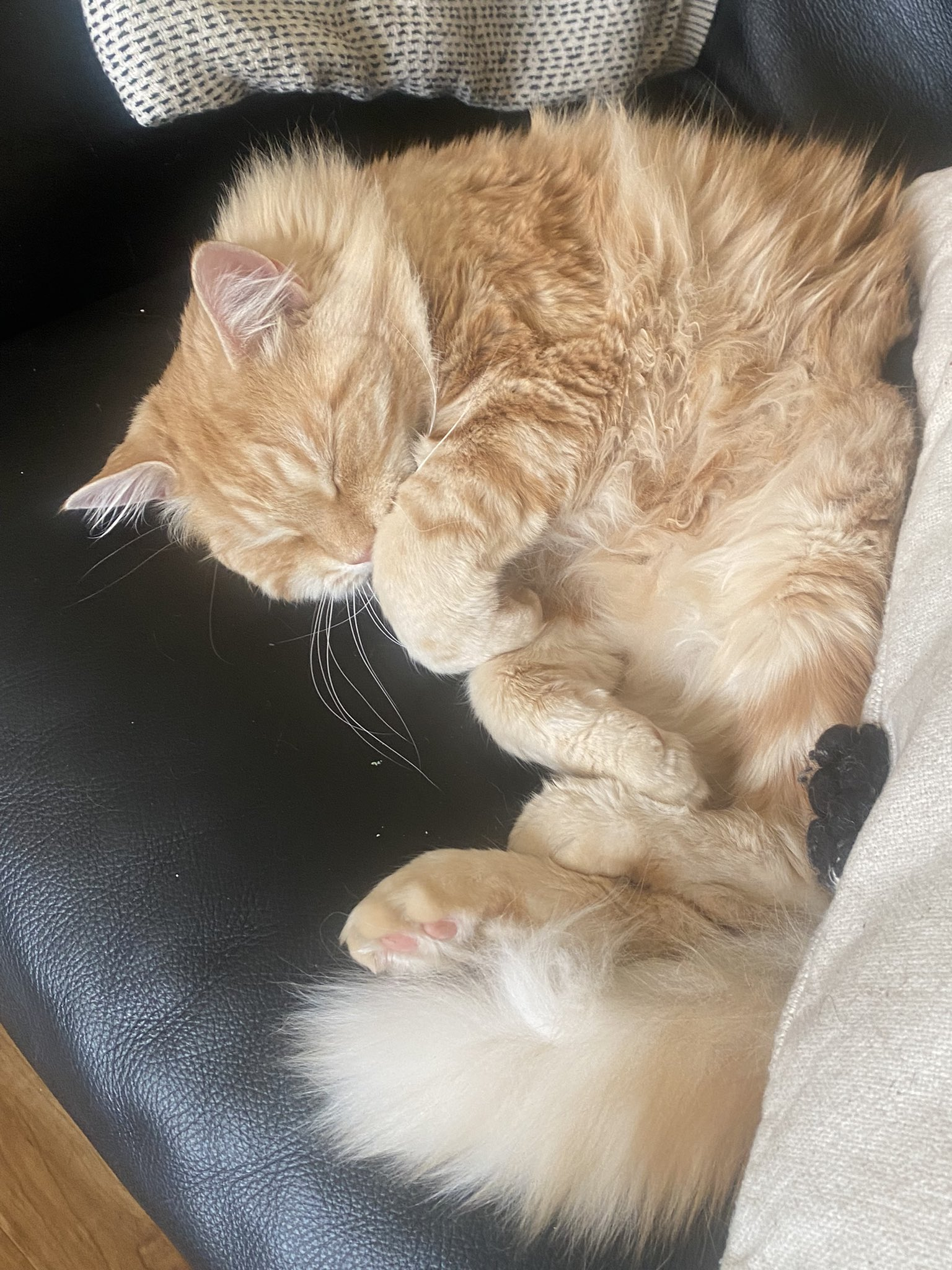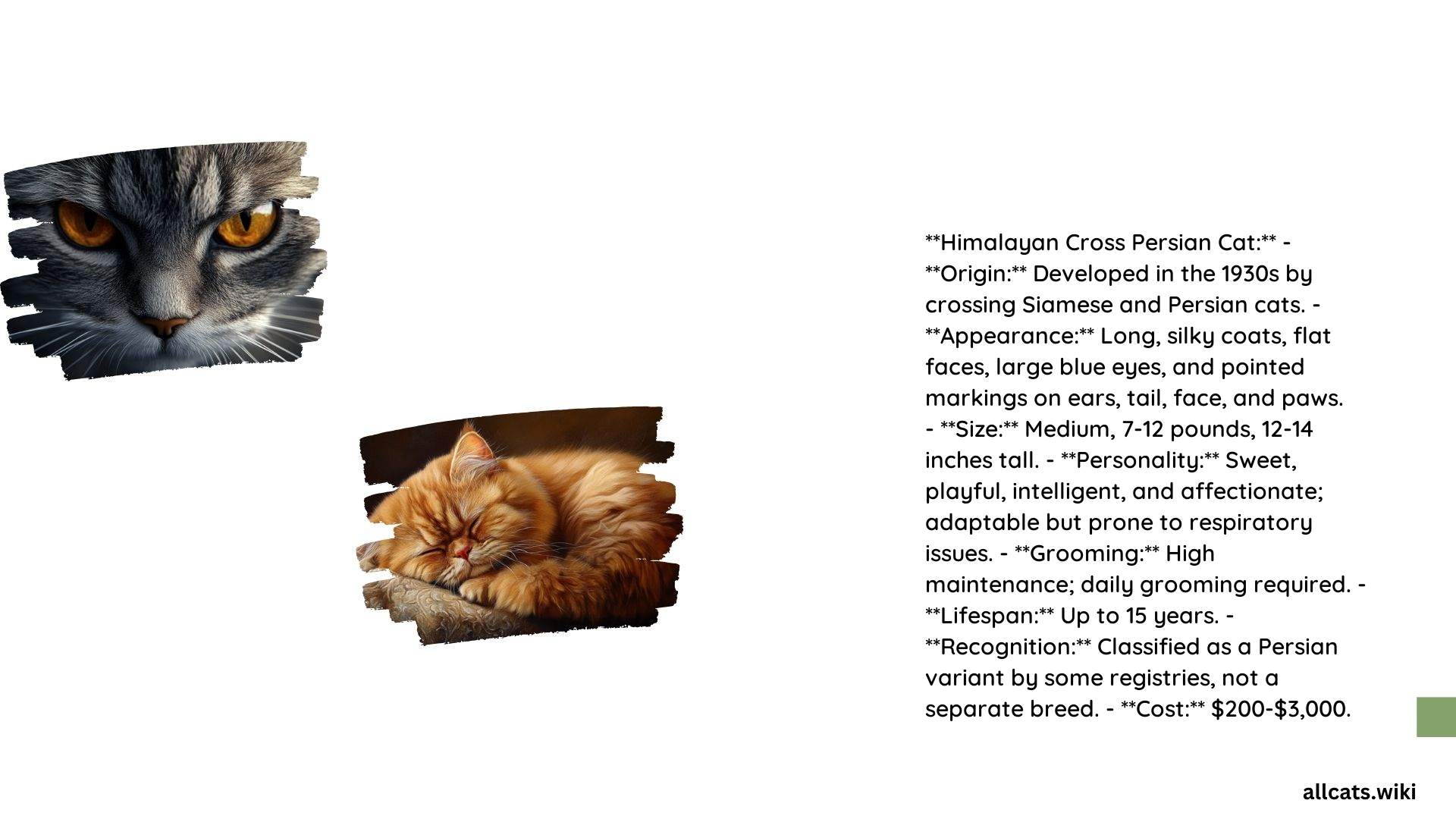The Himalayan Cross Persian Cat is a unique feline breed that combines the striking features of the Himalayan and Persian cats. These gentle giants are known for their plush, long coats, and captivating blue eyes, making them a popular choice among cat enthusiasts. In this comprehensive guide, we’ll explore the common health issues, grooming needs, temperament, and care tips for the Himalayan Cross Persian Cat.
What are the Common Health Issues of Himalayan Cross Persian Cats?

Himalayan Cross Persian Cats, due to their brachycephalic (flat-faced) structure and genetic makeup, are prone to several specific health issues:
Respiratory Issues
- Their short, broad skull can lead to breathing difficulties, particularly upper respiratory infections and compression of the sinuses and nasal passages.
- Preventive Measures: Regular veterinary check-ups, maintaining a clean environment, and avoiding exposure to pollutants can help mitigate these issues.
Dental Problems
- Dental malocclusions are common, which can lead to trauma to the teeth or soft tissue and predispose them to dental disease.
- Preventive Measures: Regular dental cleaning (every 6 months) and monitoring for signs of dental issues such as tartar build-up, bad breath, and red gums are crucial.
Genetic Predispositions
- Polycystic Kidney Disease (PKD): A genetic condition causing multiple cysts to form in the kidneys, which can disrupt kidney function. Early symptoms include excess drinking and urinating.
- Preventive Measures: DNA testing can help identify the disease early. Monitoring water consumption and urine output, along with regular veterinary check-ups, is essential.
- Eye Problems: Conditions such as cherry eye, corneal abrasions, and ulcers are common due to their brachycephalic face structure.
- Preventive Measures: Regular eye examinations and prompt treatment if any eye issues are noticed.
- Heart Disease: Himalayans can be susceptible to heart disease, which can be catastrophic if not detected early.
- Preventive Measures: Yearly veterinary exams to listen for murmurs or irregular heartbeats.
Other Health Issues
- Feline Asthma: Himalayans may have a higher incidence of asthma, which can be managed with proper care and monitoring.
- Feline Lower Urinary Tract Disease (FLUTD): This can cause bloody urine and straining to urinate. Daily litter pan cleaning and observation are important.
What are the Grooming Needs of Himalayan Cross Persian Cats?

Himalayan Cross Persian Cats have long, luxurious coats that require regular grooming to prevent matting and tangling.
Tools and Products
- Brushes: A slicker brush or a pin brush is essential for daily grooming to prevent matting and tangling.
- Combs: A wide-tooth comb or a detangling comb can be used for more thorough grooming sessions.
- Shampoos and Conditioners: Look for products specifically designed for long-haired cats. Ingredients to look for include moisturizers to keep the coat healthy and shiny. Avoid products with harsh chemicals that can dry out the coat.
Grooming Schedule
- Brushing: Daily brushing is recommended to prevent matting and tangling. This can be done in short sessions, especially around the face, ears, and tail areas.
- Bathing: Bathing should be done as needed, ideally every 2-3 months, or when the cat becomes visibly dirty. Over-bathing can strip the coat of its natural oils.
- Nail Trimming: Trim nails every 4-6 weeks to prevent overgrowth, which can cause discomfort and health issues.
What is the Temperament and Interaction of Himalayan Cross Persian Cats?
Himalayan Cross Persian Cats are known for their gentle and docile nature.
Behavior Around Owners
- They are generally affectionate and enjoy human interaction. They tend to be quiet and laid-back, making them a good fit for families and individuals who want a calm pet.
Interaction with Other Pets
- They can get along well with other pets if socialized properly from an early age. However, they may not be as playful as some other breeds and prefer a more relaxed environment.
Playfulness
- While they are not overly demanding in terms of play, they enjoy interactive toys and gentle play sessions. They are more inclined to short, leisurely play periods rather than high-energy activities.
Behavioral Traits
- They are known for their calm demeanor and can be quite laid-back. They may require more attention to their grooming needs due to their long coat, but they are generally easy-going pets.
What are the Care Tips for Himalayan Cross Persian Cats?
To enhance the bond with a Himalayan Cross Persian Cat and ensure their well-being, follow these care tips:
Playtime Activities
- Engage in short, gentle play sessions using interactive toys. They enjoy activities that stimulate their mind and provide gentle exercise.
Training Tips
- Positive reinforcement training is recommended. They respond well to gentle commands and rewards. Housebreaking can be straightforward if done consistently and patiently.
Living Environment
- Provide a comfortable and clean living space. Ensure they have access to clean litter boxes, fresh water, and a balanced diet. A quiet, stress-free environment is ideal for their calm nature.
Health Monitoring
- Regular veterinary check-ups are crucial to catch any health issues early. Monitor their health closely, especially for signs of respiratory issues, dental problems, and genetic diseases.
Reference:
